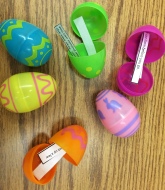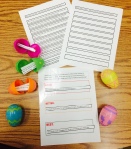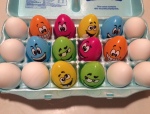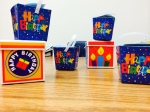April Fool’s Day is upon us about a week from now. I was never a big prankster, but my younger brothers had many hours of enjoyment playing tricks on family,friends and each other. Most jokes were harmless fun, like switching out the salt for sugar. My college boyfriend’s roommates thought it was hilarious to put tacks (pointy side up) on the floor, just outside a running shower, and yell to the person taking the shower that they had an urgent phone call. I found this mean-spirited and not one bit funny, but those crazy college boys thought that was the best joke ever! Ugh. Everyone has a different idea of what is funny (Jokey) and what isn’t (Jerky).
So how do you figure out the boundaries of April Fool’s Day? For my kids who struggle with social language and humor, I found they needed background knowledge, perspective taking and very clear rules to participate successfully on April Fool’s Day. This group can include students with ASD, ADD (impulsive + jokes=potential social trainwreck) and ESL learners (humor has a LOT of figurative language components). These skills translate into unstructured time with peers too, as humor is a way to connect socially, when it’s done with the right people, in the right place and at the right time. You can find my social language packet in my TPT store here: “April Fools” to work on these skills. This 18 page pack is perfect for elementary and young middleschoolers and includes:
- A one page summary of the history of April Fool’s Day
- A page to create your own April Fool’s Day ad
- A discussion chart with questions to ask BEFORE you play a joke or prank. Remember how I mentioned very clear rules? Here it is and it would make a great classroom poster!
- A cut and paste chart to determine if April Fool’s Day actions are JOKEY (funny) or JERKY (mean)
- Five April Fool’s Day social scenarios to talk about what someone might be thinking/saying/feeling, identifying problems and figuring out solutions
- A list of suggested books to go along with April Fool’s Day theme and an Expected/Unexpected* behavior chart to discuss the character’s actions from the books
* Expected/Unexpected are terms used in the “SocialThinking” (R) curriculum by Michelle Garcia Winner.
This Pinterest page dedicated to April Fools has a lot of cute, kid friendly ideas and you can talk about them in light of being “Jokey or Jerky”.
What is the best April Fool’s Day prank you ever pulled? Share here (we won’t judge 🙂 )

 Hello and welcome to our blog hop! My name is Heidi Britz and I am a school based SLP with more than 20 years of pediatric experience. I prefer the term “seasoned SLP” to “old speech lady”, but that’s just me 🙂 My professional love (some might call it an obsession) is social language. My goal is two-fold, to reach my students with social language impairments, and to provide support to my fellow SLPs, CFs and teachers in my community. It’s a win-win for everyone!
Hello and welcome to our blog hop! My name is Heidi Britz and I am a school based SLP with more than 20 years of pediatric experience. I prefer the term “seasoned SLP” to “old speech lady”, but that’s just me 🙂 My professional love (some might call it an obsession) is social language. My goal is two-fold, to reach my students with social language impairments, and to provide support to my fellow SLPs, CFs and teachers in my community. It’s a win-win for everyone!





